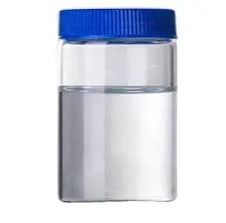IUPAC Name
propan-1,2,3-triol
Cas Number
56-81-5
HS Code
2905.45.00
Formula
C3H8O3
Industry
Palm Derivatives
Appearance
Clear Colorless Liquid
Common Names
1,2,3-propanetriol
Packaging
250 Kgs HDPE Drum. 20 MT/20 FCL
Refined glycerine (also known as glycerol or glycerin) is a basic sugar alcohol that has three hydroxyl groups that give it water solubility and hygroscopic properties. This colorless, fragrance-free, crystal-clear liquid has a high boiling point and viscosity, which indicate its inherent sweetness and low toxicity. It comes from petrochemical feedstock and has a density of 1.26 g/cm³. It is used in many industries, such as food, medicine, cosmetics, personal care, and biodiesel manufacturing.
Threshing
Thorough threshing is the first step in treating palm fruit, which removes the main stem and any associated spikelets.
Sterilization
Steaming palm fruits stops them from hydrolyzing and oxidizing, which makes it easier for the resin, gum, and kernel to separate.
Digestion
Sterilized fruits are mechanically mixed and pounded to liberate palm oil with the help of extra heat.
Pressing
Processed fruit is extracted from its oil by hydraulic pressure extraction.
Oil clarification
After being extracted, the oil is purified by adding hot water to remove impurities and then filtering the mixture.
Deacidification
Free fatty acids are removed by solvent extraction using methanol, which is essential to halting oil oxidation.
Transeferication/Saponification
Further refining is required to produce refined glycerine since hydrolysis breaks down triglycerides into glycerol and fatty acids.
Glycerin pre-treatment
Distillation is one of the separation techniques used to purify the glycerine and fatty acid combination.
Evaporation
To create completely purified glycerine, the leftover methanol from the deacidification procedure is evaporated.
Refined glycerine (also known as glycerol or glycerin) is a basic sugar alcohol that has three hydroxyl groups that give it water solubility and hygroscopic properties. This colorless, fragrance-free, crystal-clear liquid has a high boiling point and viscosity, which indicate its inherent sweetness and low toxicity. It comes from petrochemical feedstock and has a density of 1.26 g/cm³. It is used in many industries, such as food, medicine, cosmetics, personal care, and biodiesel manufacturing.
Threshing
Thorough threshing is the first step in treating palm fruit, which removes the main stem and any associated spikelets.
Sterilization
Steaming palm fruits stops them from hydrolyzing and oxidizing, which makes it easier for the resin, gum, and kernel to separate.
Digestion
Sterilized fruits are mechanically mixed and pounded to liberate palm oil with the help of extra heat.
Pressing
Processed fruit is extracted from its oil by hydraulic pressure extraction.
Oil clarification
After being extracted, the oil is purified by adding hot water to remove impurities and then filtering the mixture.
Deacidification
Free fatty acids are removed by solvent extraction using methanol, which is essential to halting oil oxidation.
Transeferication/Saponification
Further refining is required to produce refined glycerine since hydrolysis breaks down triglycerides into glycerol and fatty acids.
Glycerin pre-treatment
Distillation is one of the separation techniques used to purify the glycerine and fatty acid combination.
Evaporation
To create completely purified glycerine, the leftover methanol from the deacidification procedure is evaporated.
